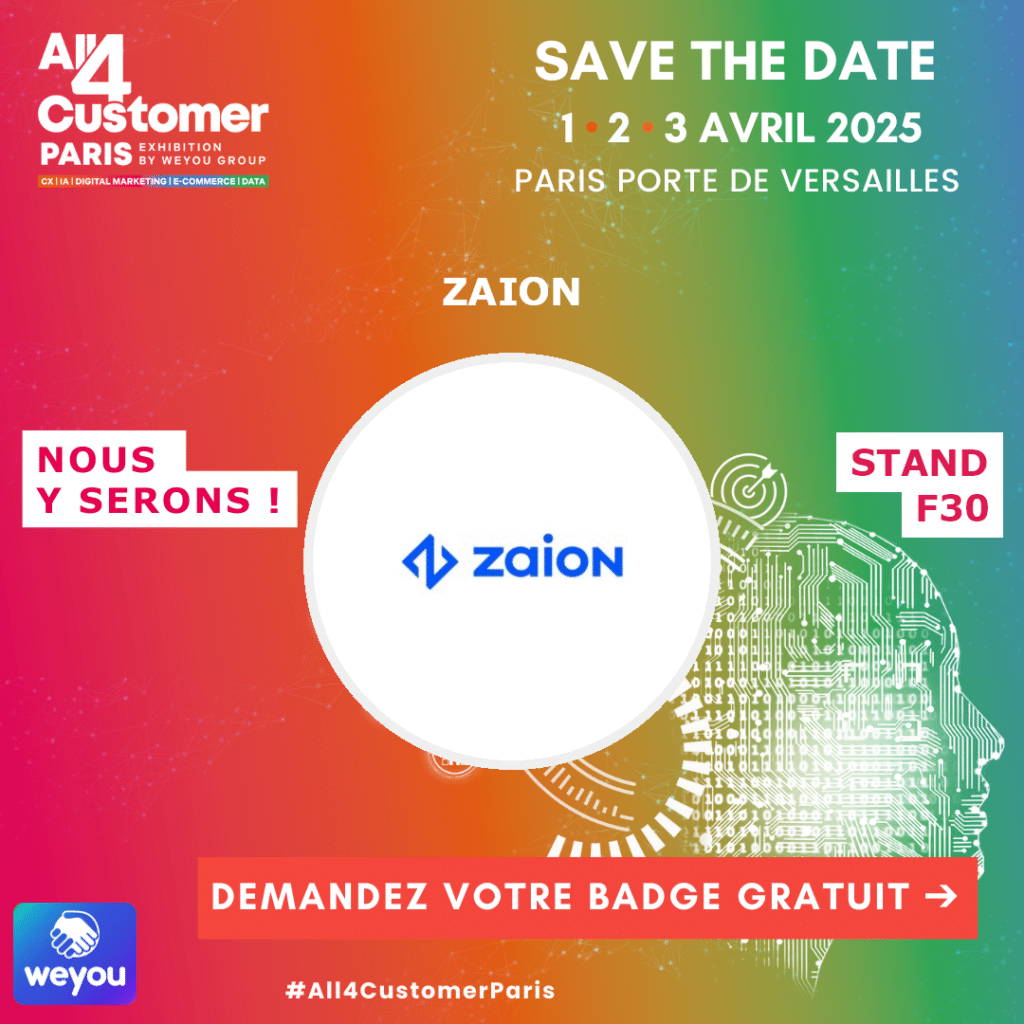Customer relations and contact center glossary
The world of customer relations and contact centers is full of all kinds of concepts and acronyms. To help you find your way around, what better than a dedicated glossary?
A
Abandonment: a call detected by a telephone voice server in which the caller hangs up before receiving a response to his or her request. By answer, we mean: an exchange with an advisor or an answer from the voice server, or a callbot fed to the AI.
ACD (Automatic Call Distribution): automatic call distribution solution used in call centers to manage the distribution of incoming calls according to pre-established criteria. This can be, for example, according to availability, advisor skills or working/non-working hours.
Administrator: individual responsible for configuring and maintaining the technology that enables the call center to operate. In general, the administrator can configure and manage USER accounts and those of the advisors responsible for providing answers to customers who contact them. This applies in particular to our Zaion Analytics and Zaion Assistant platforms.
Agent (also called advisor): person in charge of handling incoming and outgoing calls.
API (Application Programming Interface): an interface enabling two computer applications to communicate with each other, thus facilitating their integration. In particular, an API enables application designers to incorporate an external app into their own systems. For example, a push-up reminder system without having to create the API.
Tree structure: the tree structure is the materialization of the hierarchical organization of level 1 menus and level 2, 3 or 4 submenus of the Voice Server. The tree structure often takes the form of a tree, with the main trunk followed by branches of varying size: the trunk is usually the welcome message.
ASR (Automatic Speech Recognition): automatic speech recognition technology that analyzes speech and transcribes it into machine-readable text.
Telephone hold: time during which the caller waits before being put through to an advisor. A waiting message and/or background music can be played while the caller waits.
B
Agent banner: an essential element of the contact center solution, it brings together all the information and functions required for the advisor's tasks: taking an incoming call, making an outgoing call, transferring a call, etc.
C
Callbot: "Call" for the telephone channel and "Bot" for the ability to respond automatically and immediately.
The callbot is a conversational robot capable of understanding customer intentions in natural language and providing a precise response according to context.
Unlike the chatbot, which uses the written word, the callbot has the ability to understand natural language and formulate an oral response.
Contact center: a set of human, real-estate, movable and technical resources used to manage remote relations between a company and its market.
Contact Center Solution: all the business applications used to manage customer relations. The contact center solution enables customer advisors to manage all incoming and outgoing calls. It is used, for example, to provide customers with information on a product or service, to ensure after-sales follow-up, or to respond to customer problems.
Virtual contact center: the virtual contact center unifies physical centers scattered over a geographical area. As a result, the strength of the advisors is multiplied tenfold, even though the customer advisors are spread across different sites.
CES (Customer Effort Score): an indicator designed to measure the effort expended by a customer in the course of his or her journey. Among other things, CES is used to determine the level of customer satisfaction and the fluidity of the proposed experience.
Chatbot: a conversational robot that communicates with users in writing and in natural language.
The most advanced chatbots tolerate spelling mistakes and adapt to SMS language. They understand the questions asked by customers and provide personalized answers based on their profile and customer history.
The chatbot provides immediate answers to the most frequently asked questions: After-sales service, ordering, general information about the brand... and redirects the customer to an advisor in the case of more complex requests. The chatbot can connect to CRM, tracking or geolocation tools, and can be deployed on a wide variety of environments (website, mobile application, messaging platforms, etc.).
Click-to-call: a tool enabling advisors to dial a telephone number with a simple click directly from their advisor interface. This feature eliminates the need for advisors to dial numbers by hand, saving considerable time.
CRM (Customer Relationship Management): a Customer Relationship Management tool, it brings together all the information needed to acquire, recruit and retain customers (marketing, customer services, after-sales services, etc.).
D
Overflow: tools for organizing call routing when the queue size limit or maximum authorized waiting time is reached. Usually, calls are routed to a telephone number outside the Customer Relations Center, but today there are technological solutions: theOverflowbot enables efficient handling of customer requests on hold.
Line sizing: number of telephone lines made available to the contact center. The number of telephone lines allocated will define the capacity to handle calls and put additional calls on hold if necessary.
Dissuasion: action to relieve congestion in a contact center when the queue is saturated or the maximum waiting time has been reached. Dissuasion often takes the form of an audio message inviting customers to repeat calls at a later date.
AMT (Average Handling Time): total time a customer service advisor spends in conversation with a customer. It includes waiting time, time spent completing forms and any other tasks resulting from the conversation, as well as the duration of the conversation itself.
DTMF (Dual Tone Multi Frequency): technology used to signal numbers between 0 and 9, as well as symbols, using the keys on a telephone keypad. This technology is widely used today to communicate with Interactive Voice Response (IVR) systems.
E
Discreet listening: function enabling the supervisor to listen in remotely on a conversation between a customer advisor and the caller. Discrete listening is used in particular for training purposes. In France, eavesdropping is highly regulated.
Status (of customer advisor): a customer advisor's status at a given moment.
A customer advisor can be :
- "Ready": he or she can receive a new incoming call
- "In incoming communication": he or she is handling an incoming call.
- "In outgoing communication": he or she is handling an outgoing call.
- "On break": he or she is temporarily unavailable
- "In retreat": he or she is busy with another task and not available to take calls.
- "In post-call or wrap-up processing: the advisor is busy completing administrative tasks in the post-call time provided, before becoming "ready" again.
- "Disconnected": he or she is disconnected from the contact center.
F
FAQ (Frequently Asked Questions): knowledge base containing the questions most frequently asked by customers, and the associated answers. This database can be digitized using a Callbot or Chatbot.
Queue: in a customer relations center, a virtual space where incoming calls that cannot be handled directly by customer advisors are "stored". The maximum waiting time, as well as the maximum number of calls put on hold before overflow, can be configured by the contact center solution administrator.
I
Administration interface: reserved for administrators of contact center solutions, it enables the tool to be configured and maintained.
Supervision interface: also known as the supervision console, this is the Zaion Analytics platform, dedicated to managing your Callbots, Chatbots and Messagingbots. This is where you'll find all the information gathered in real time from your conversations.
M
Call waiting: a function for queuing calls that cannot be handled directly by the advisors. An audio message or music can be played to keep the caller waiting.
SaaS mode (Software as a Service): This is dematerialized software, hosted by the supplier and distributed as a service accessible from any computer or tablet with an Internet connection. SaaS mode involves a whole range of services offered by the supplier: deployment, support, maintenance and upgrade requests are carried out remotely on the Cloud.
N
Net Promoter Score or NPS: percentage of customers who are likely to recommend a company, product or service to a friend or colleague on a scale of 0 to 10. In call centers, this criterion is very important for measuring the quality felt by callers.
P
Telephone platform: workspace, usually open-plan, where all customer advisors work together.
Telephone port: telephone line.
Number portability: the ability for a subscriber to change telecom operator while keeping his or her telephone number.
Agent position: all the components of a customer advisor's workstation (computer, headset, etc.).
Q
QoS (Quality of Service): The level of Quality of Service is analyzed using criteria that are both qualitative (e.g. % of calls answered in less than 10 seconds) and quantitative (KPI's of calls handled / hour / customer advisor).
R
Automatic Speech Recognition (ASR): artificial intelligence technology for understanding natural language. It picks up the human voice from a microphone, analyzes it (pronounced words, intonation, accent, etc.) and transcribes it into a computer request, in the form of text or a file that can be processed by a computer. This is also known as speech recognition or speech-to-text.
Call routing: a set of rules for distributing incoming calls to advisors in a customer relations center.
S
Telephone self-service: an autonomous function performed by voice servers, the aim of which is to automate certain customer requests. These are mainly the most recurrent low value-added actions: indicating opening hours, recalling recorded information, etc. Self-service or autonomous tasks performed by customer relations centers enable advisors to concentrate on higher value-added requests (e.g. customer complaints, complex requests, etc.).
Interactive Voice Service (IVS): a device that automates telephone reception and qualifies callers' requests before putting them in touch with an advisor. A voice server can also offer telephone self-service.
Text-to-speech (TTS): technology for vocalizing written text. Text-to-speech allows audio files to be generated directly from text files.
T
Service rate: KPI for monitoring the Quality of Service delivered by a Customer Relations Center to callers. The service rate is generally calculated as the sum of calls handled + overflow / number of calls received. A minimum service rate is often defined as a target to be achieved by supervisors.
Telemarketing: direct marketing operations carried out by voice (e.g. market research, file qualification, obtaining promises to buy, telesales, etc.).
ToIP: telephony using Voice over IP technology. See definition below: VoIP.
Blind transfer: the action whereby an advisor transfers an incoming call to another customer advisor, without first checking that the latter is available to take the call.
Consultative transfer: as opposed to blind transfer, here the advisor transfers an incoming call to another caller, checking beforehand that the latter is available to take the call (and possibly specifying the reason for the call).
V
VoIP (Voice over IP): technology for transporting voice (and video) over an IP transport network. Voice is transmitted in packets. In practice, VoIP enables telephony and videoconferencing over the Internet or a computer network.
W
Web callback: a telephone callback service initiated from a website. Web callback enables web users to request a free call from a human agent, via a call button or web contact form, to obtain face-to-face information about the company's products or services.










